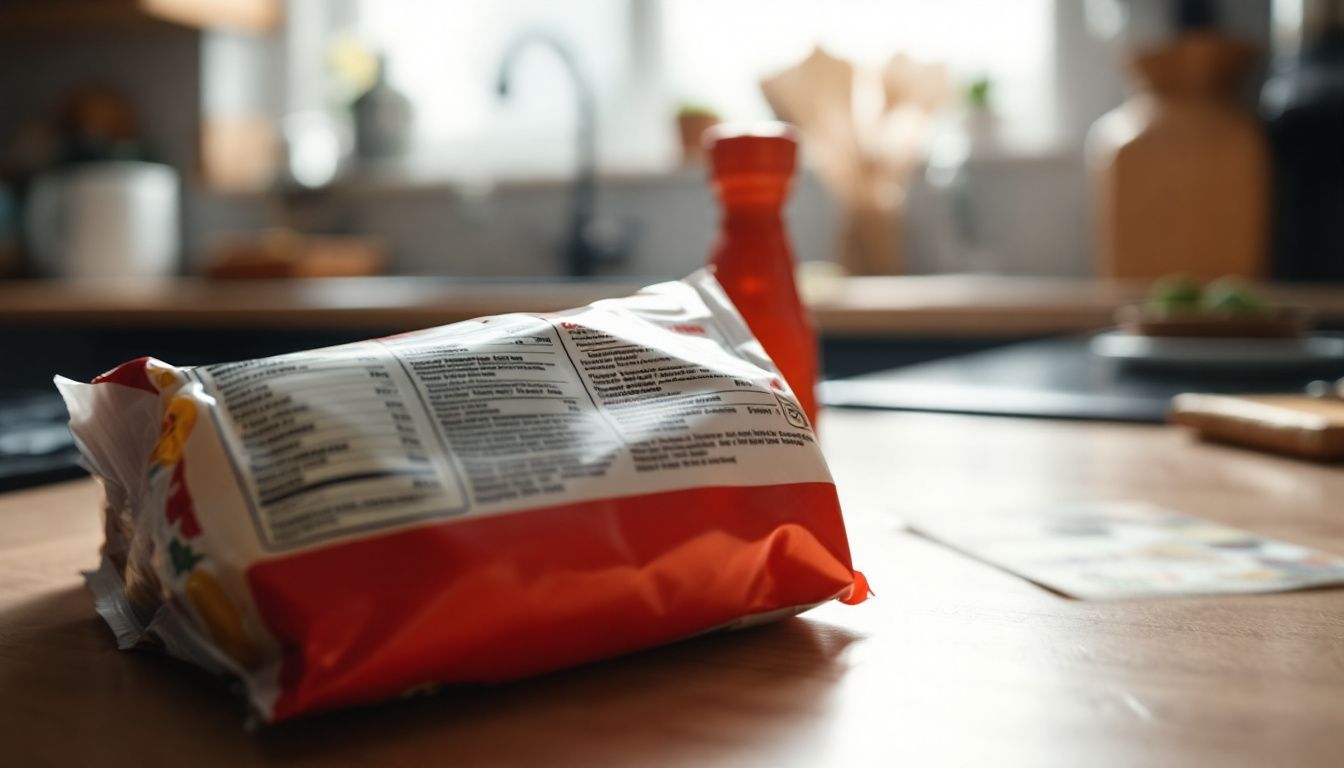Reading food labels can be confusing. Many products use tricky words that might not mean what you think. This post will explain how to understand nutrition facts, serving sizes, and hidden ingredients.
Thank you for reading this post, don't forget to subscribe!Keep reading to make smarter choices for your health!
Key Takeaways
- Food labels can be tricky. Watch for hidden fats, sugars, and misleading terms like “calorie-free” or “fat-free.” Small amounts can add up!
- Serving sizes matter. Calories and nutrients listed are based on one serving—not the whole package.
- Check added sugars closely. Too much increases risks of heart disease or high blood pressure. Choose low-sugar options.
- The FDA oversees food labels but doesn’t check all products for accuracy. Calories could be underestimated by 200 per serving in some packaged meals!
- Study ingredient lists from most to least used weight-wise, avoid trans fats (often labeled as partially hydrogenated oils), and focus on fiber-rich foods for health benefits.
Understanding the Basics of Food Labels

The Nutrition Facts label gives key details about the food you eat. It shows the serving size, calories per serving, and servings per container. A small bag of chips may have more than one serving—doubling or tripling your calorie intake if eaten all at once.
Pay close attention to this information to avoid overeating.
Check for saturated fats, trans fats, and added sugars in the ingredient list. Even if trans fat is listed as 0 grams, it can hide under names like “partially hydrogenated oils.” The % Daily Value tells how much a nutrient contributes to your daily needs based on a 2,000-calorie diet.
For example, a yogurt with 20% Vitamin D meets one-fifth of your daily value for that nutrient.
“Understanding labels isn’t just reading; it’s knowing what fuels your body.”
Move ahead to find surprising facts hidden within food labels…
Surprising Facts About Food Labels
Foods with fewer than five calories can be called calorie-free on the label. Fat content below 0.5 grams per serving is rounded down to zero grams. This might make products seem healthier than they are.
For example, small servings of butter spray may appear fat-free but still contain total fat if used in larger amounts.
Sulfites, often found in processed foods and wine, do not always show up on ingredient lists. Also, nutrition labels might underestimate calories by a wide margin—packaged meals or restaurant food can have up to 200 extra hidden calories per serving! The FDA oversees labels but doesn’t check every single product for accuracy consistently….
How to Use Food Labels to Make Better Choices
Food labels can help you eat better. Reading them carefully makes healthy choices easier.
- Check the serving size first. The calories per serving and nutrients listed are based on that amount, not the whole package. Watch servings per container to avoid overeating.
- Look at calories per serving. This helps manage energy intake, especially for weight control or obesity prevention.
- Pay attention to added sugars. Too much added sugar increases the risk of heart disease and high blood pressure. Choose products with little or no added sugars like agave nectar or table sugar.
- Compare saturated fats and trans fats. High intakes raise bad cholesterol (low-density lipoprotein), increasing cardiovascular disease risks. Choose foods rich in unsaturated fats like omega-3 fatty acids instead.
- Focus on sodium content if you’re watching blood pressure. Select items labeled “light in sodium” to reduce sodium intake.
- Notice dietary fiber levels for better digestion and heart health benefits. Foods with high fiber, like whole grains, aid a balanced diet.
- Study the ingredient list closely—ingredients appear by weight, from most to least used in a product.
- Use percent daily values (DVs) as guidance but not strict rules; 5% DV is low, while 20% DV is high for nutrients like vitamin D or total carbohydrates.
- Avoid artificial sweeteners or high-fructose corn syrup if looking for natural options over processed ones.
- Choose lean meats and dairy products lower in saturated fat for reducing cholesterol levels without losing essential nutrients.
Conclusion
Understanding food labels can change how you shop and eat. Small details, like added sugars or serving sizes, make a big difference. Be mindful of misleading terms on packaging. Use the nutrition facts to choose healthier foods for your diet.
Smarter choices today lead to better health tomorrow!
References
- https://www.heart.org/en/healthy-living/healthy-eating/eat-smart/nutrition-basics/understanding-food-nutrition-labels
- https://www.fda.gov/food/nutrition-facts-label/how-understand-and-use-nutrition-facts-label
- https://guidingstars.com/guiding-stars-news/10-surprisingly-unfamiliar-nutrition-facts-label-facts/ (2010-01-18)
- https://blog.backtotheroots.com/2016/04/29/8-surprising-facts-about-nutrition-labels/ (2016-04-29)
- https://pmc.ncbi.nlm.nih.gov/articles/PMC10819117/
